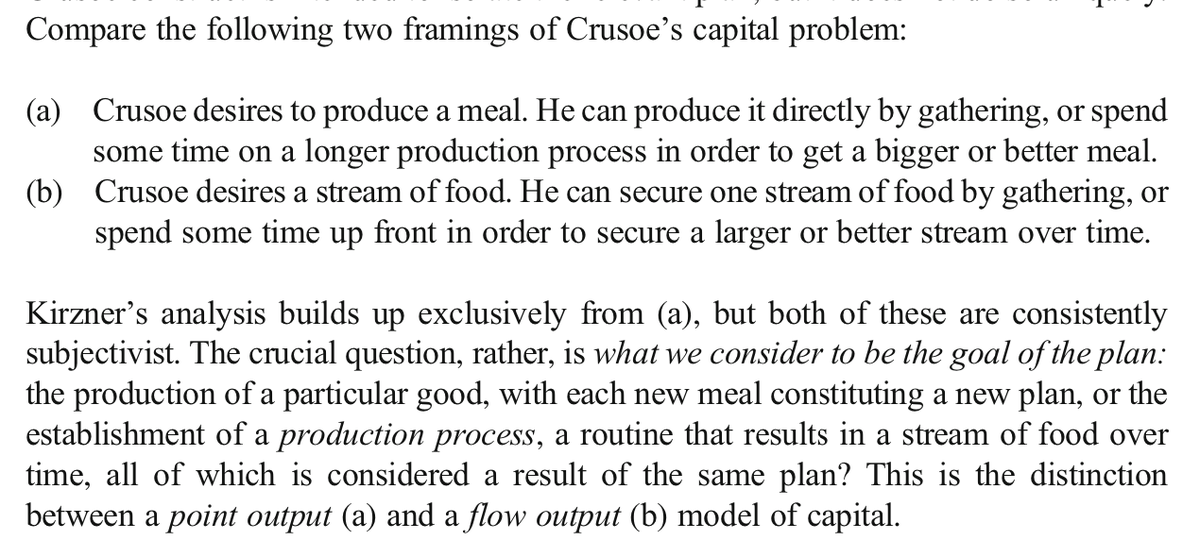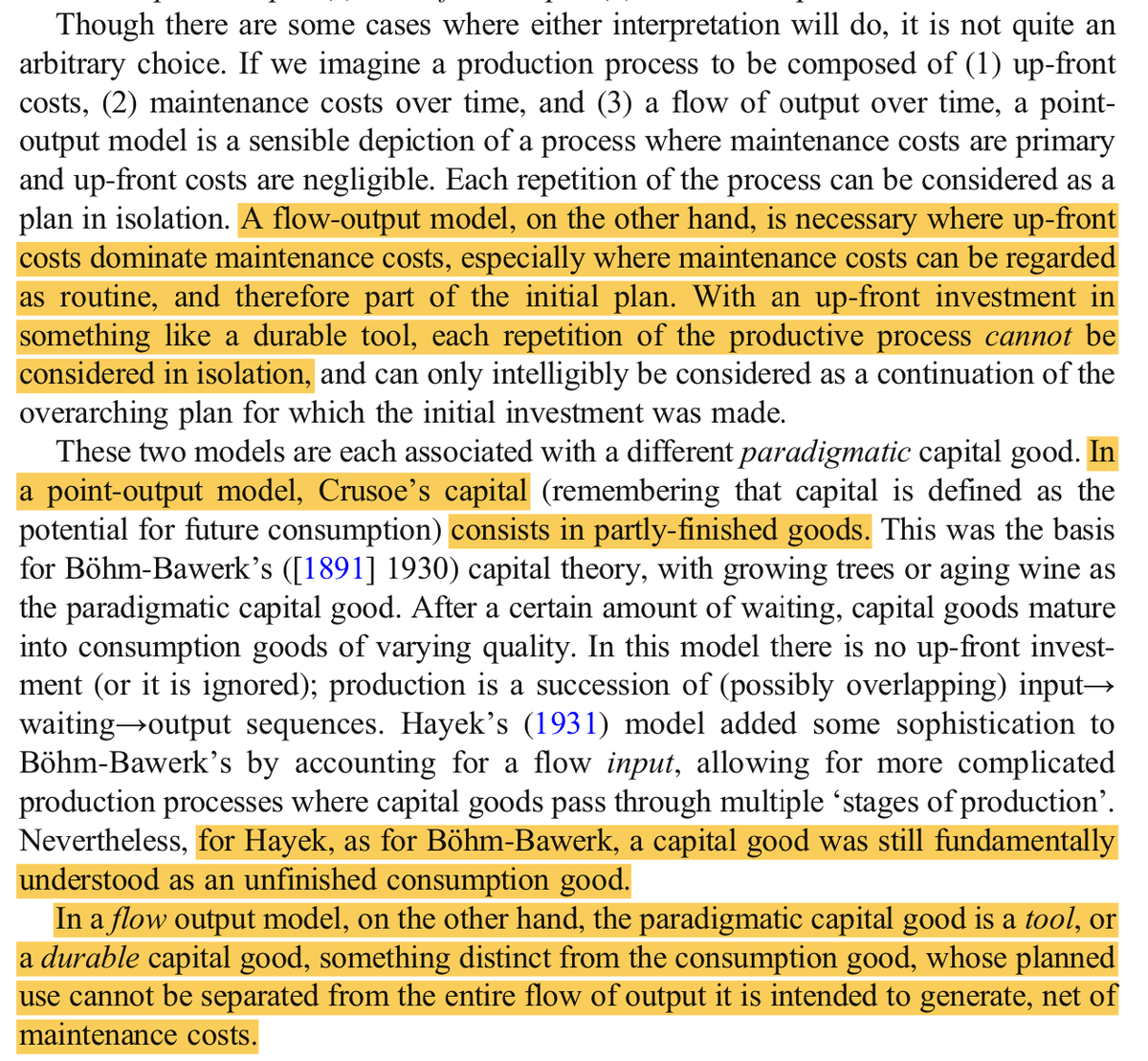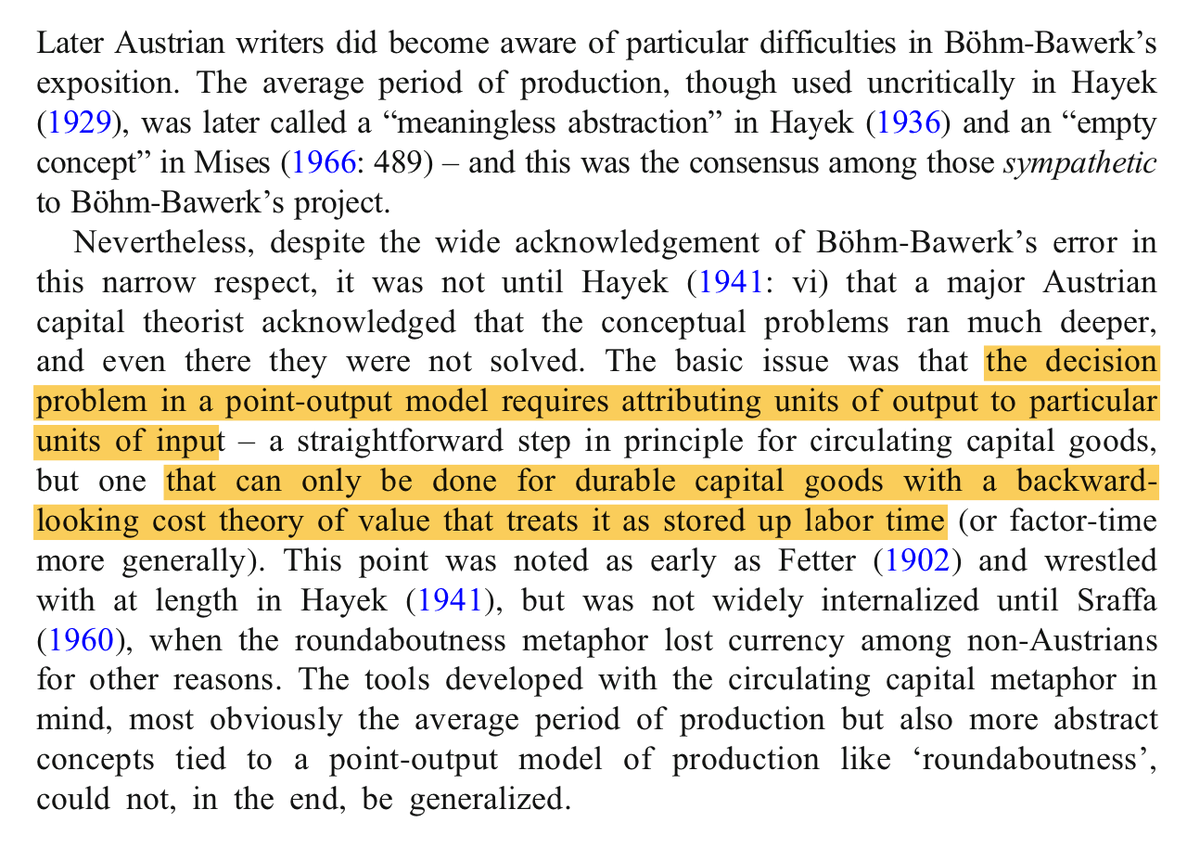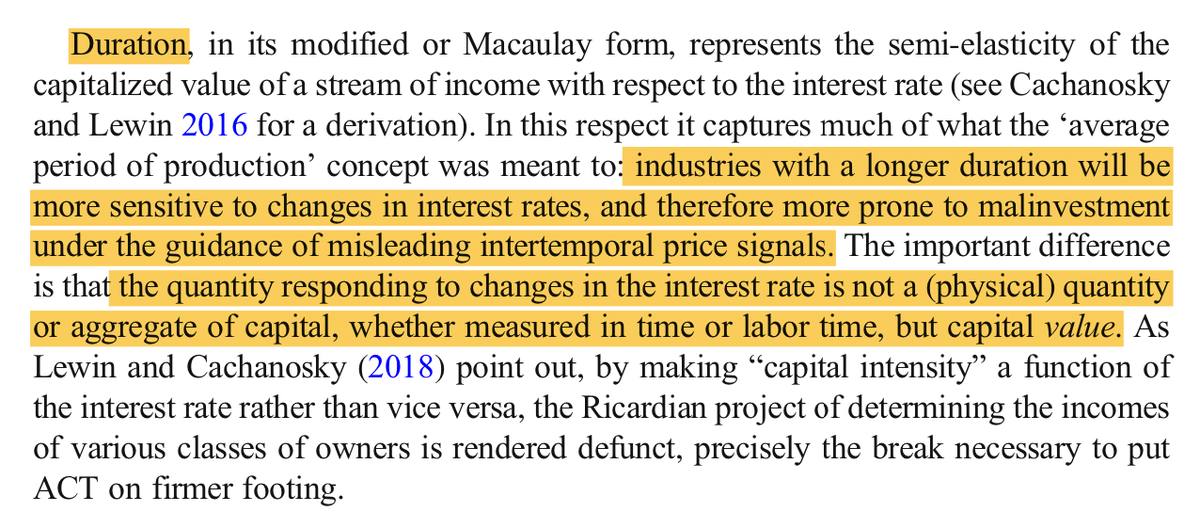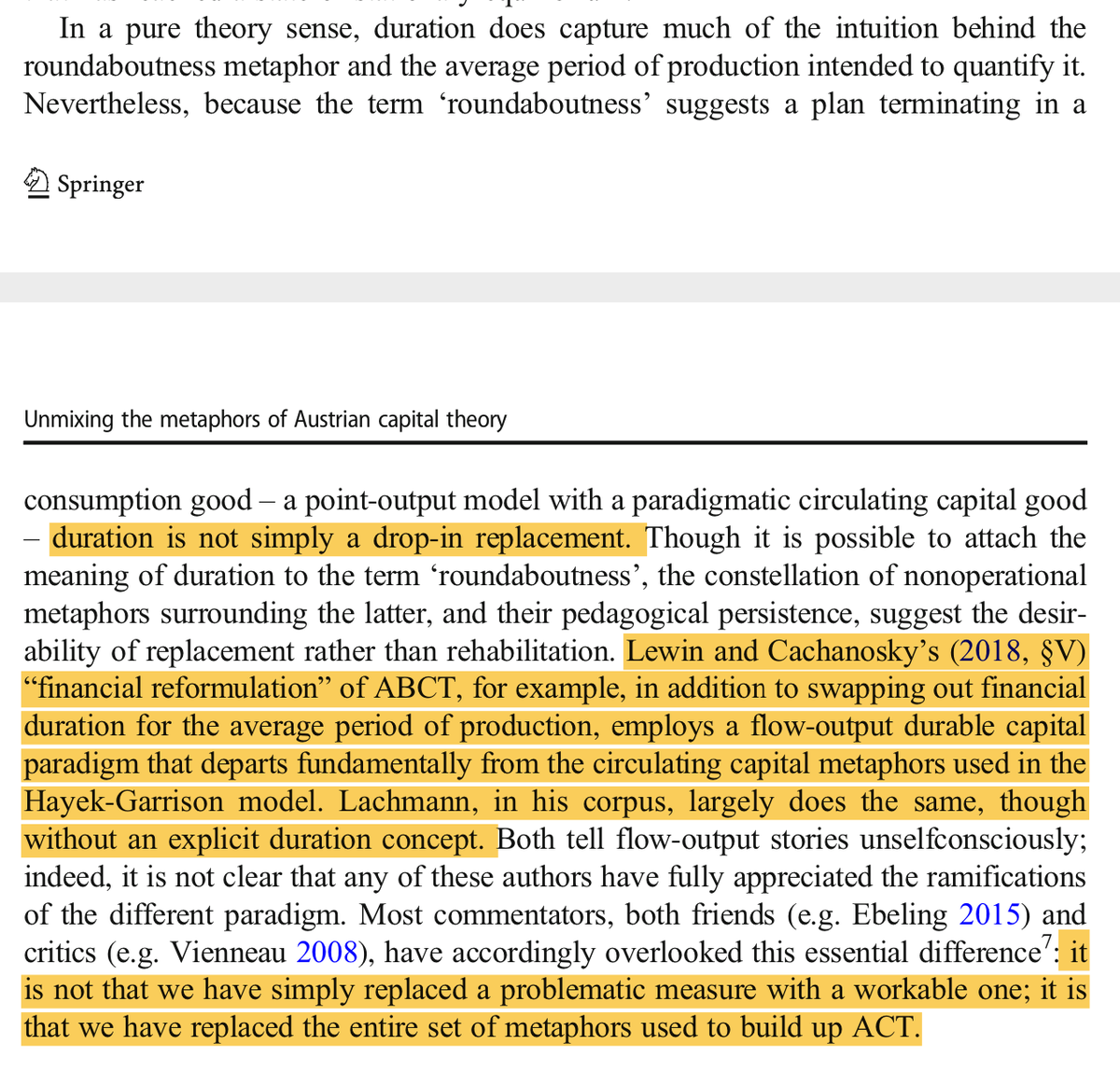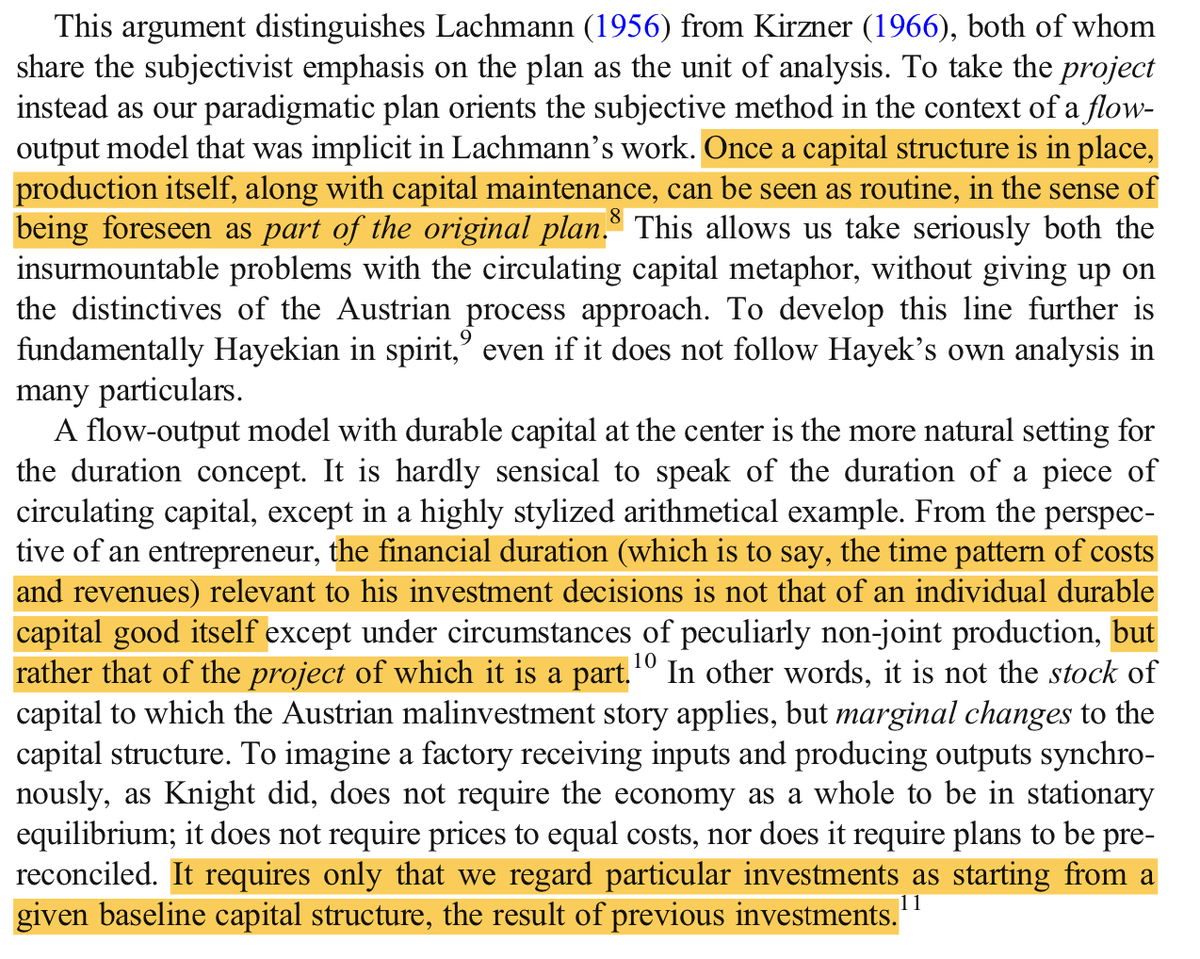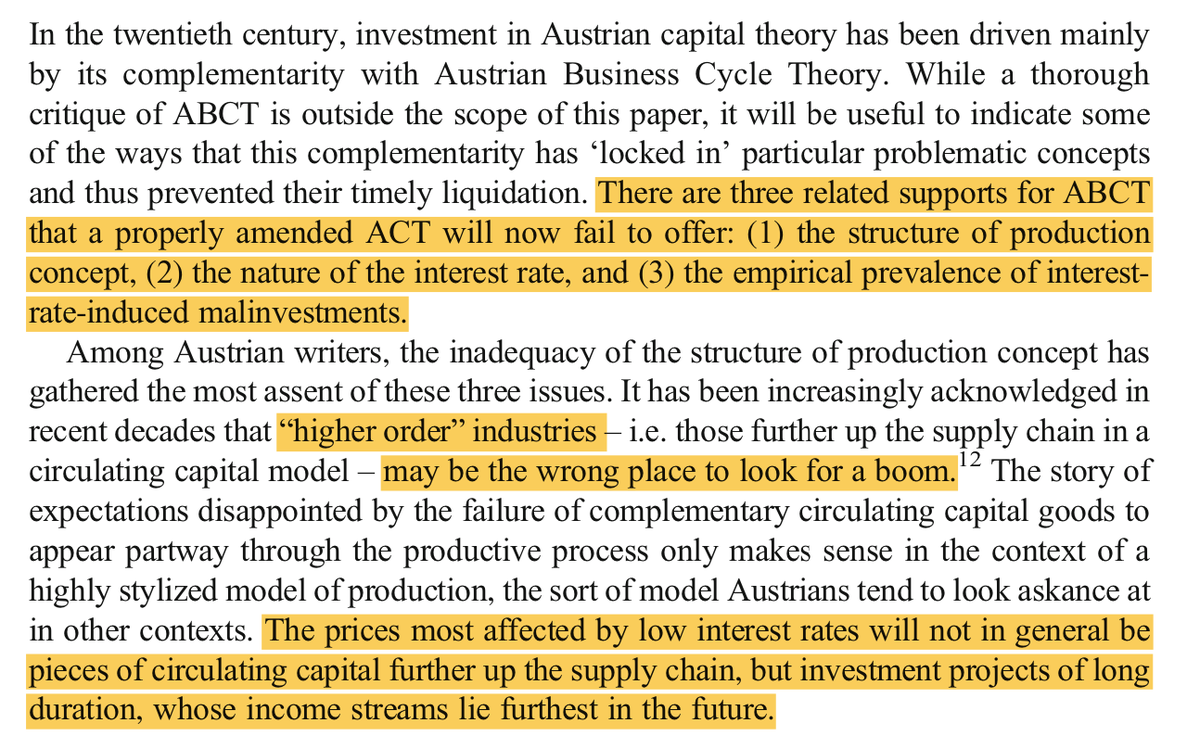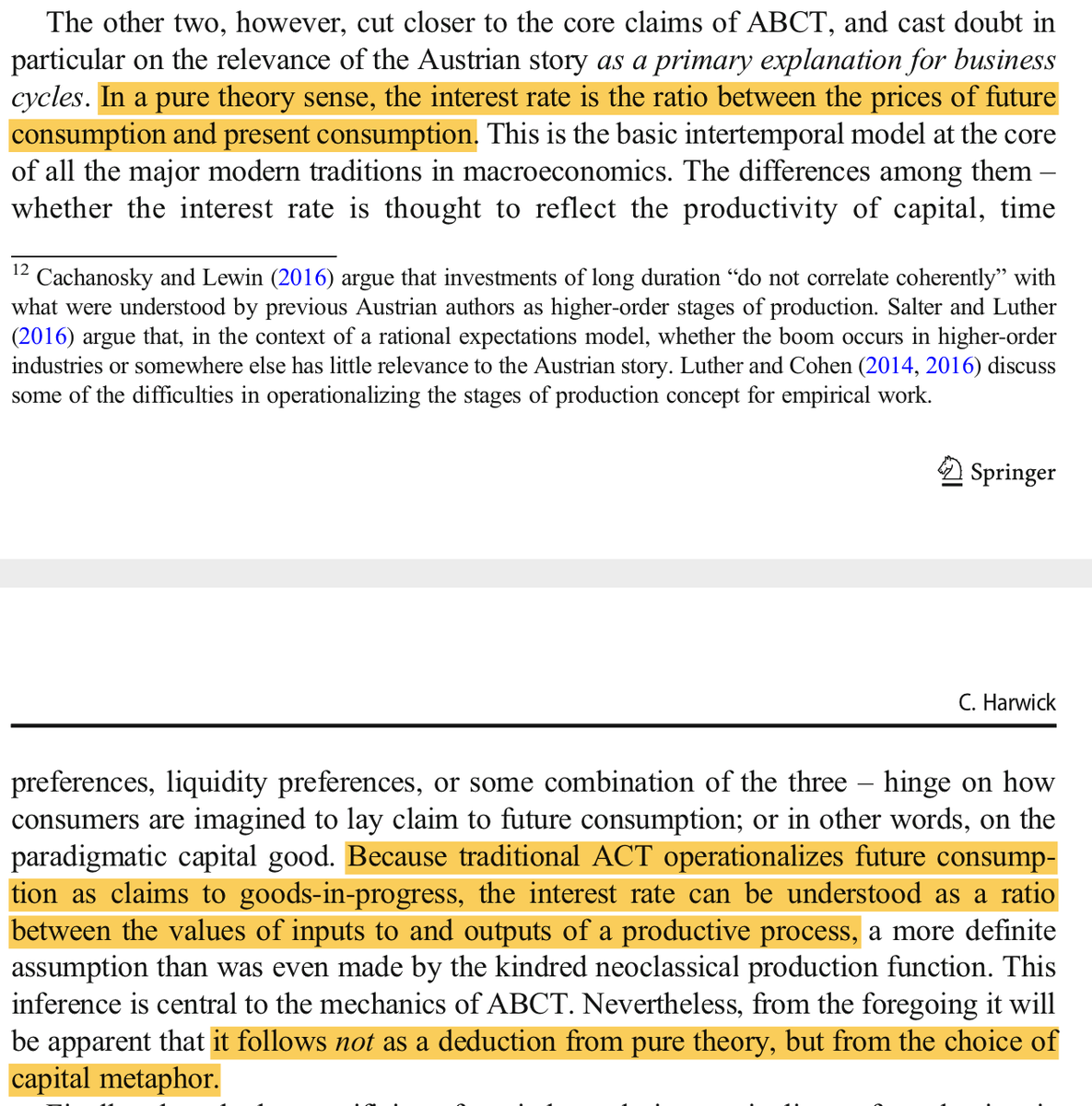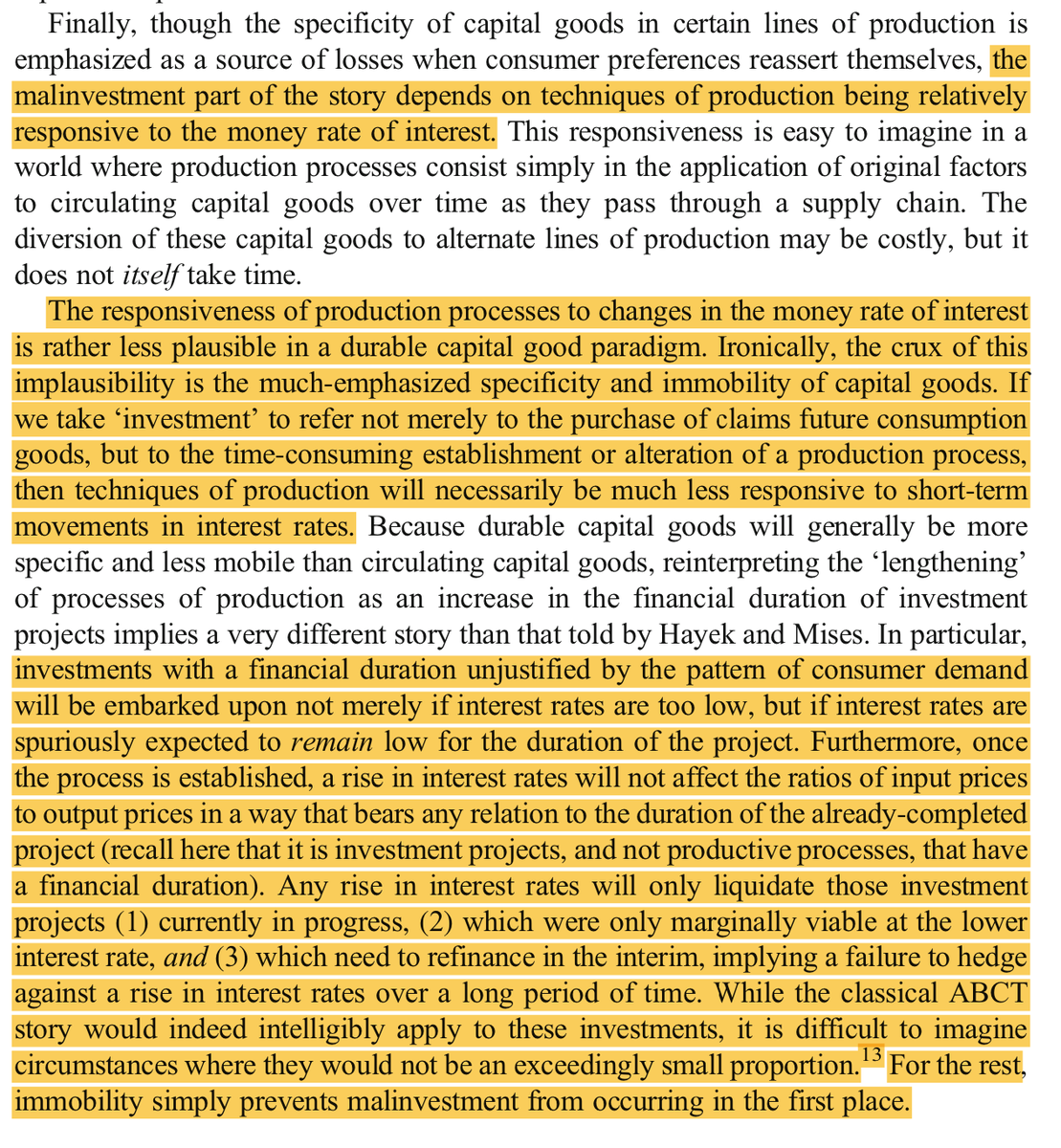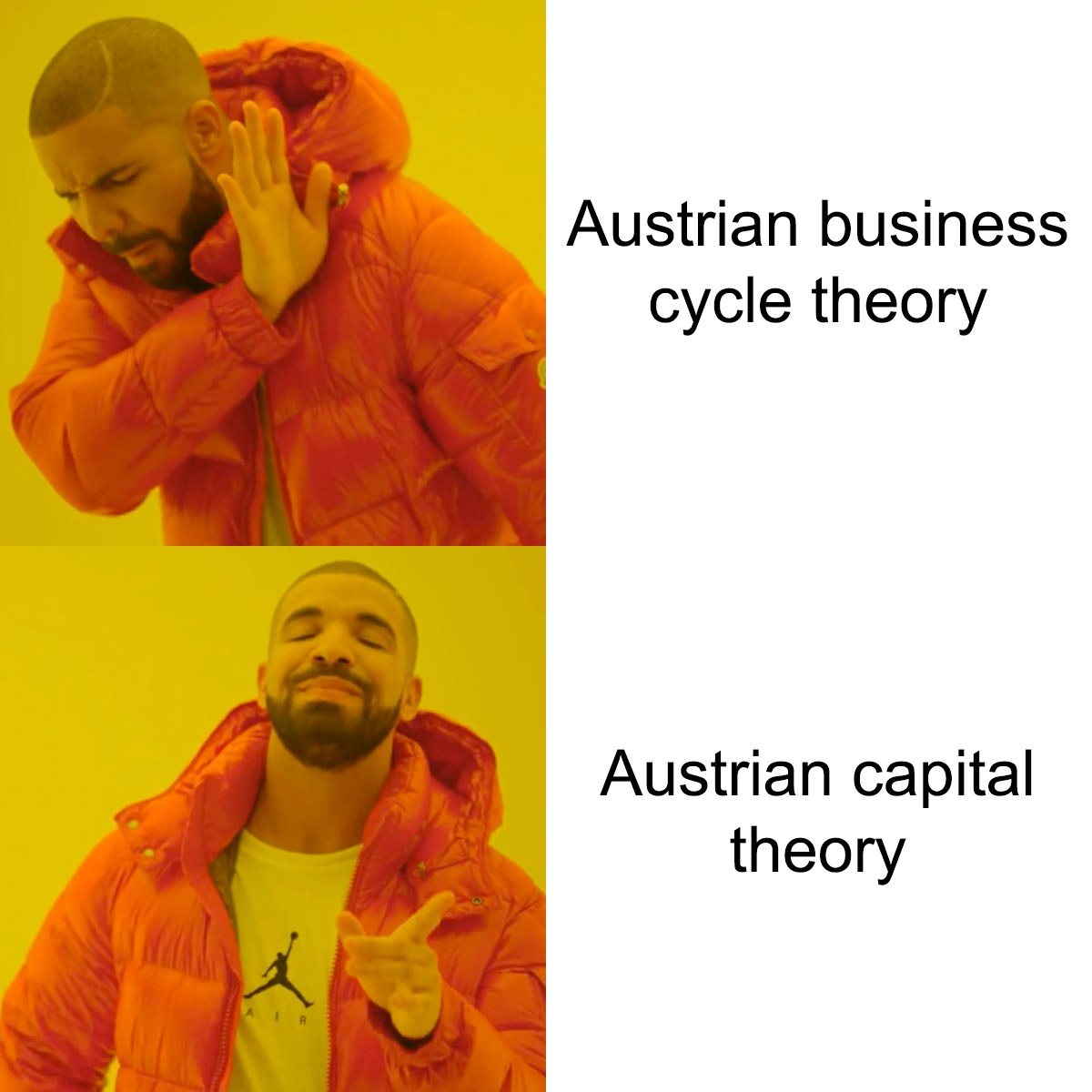New paper "Unmixing the Metaphors of Austrian Capital Theory"—where I criticize the Hayek-Garrison model, offer a path forward, and argue for capital theory& #39;s independence from business cycle theory—is up at the Review of Austrian Economics.
Highlights ↓ https://link.springer.com/article/10.1007/s11138-020-00515-8">https://link.springer.com/article/1...
Highlights ↓ https://link.springer.com/article/10.1007/s11138-020-00515-8">https://link.springer.com/article/1...
It& #39;s all well and good to talk about capital theory in terms of plans. But there are at least two ways of conceptualizing production plans, and one of them gets you into analytical trouble later.
If you imagine production plans as being for *particular items*, you& #39;re stuck with a view where capital=goods-in-progress and labor is the only input.
To make sense of tools (durable capital) as inputs, you have to imagine people planning to produce *flows* of output.
To make sense of tools (durable capital) as inputs, you have to imagine people planning to produce *flows* of output.
Everyone& #39;s admitted for a long time that the average period of production concept doesn& #39;t really work. But "roundaboutness", "capital-intensity", and other concepts tied to a point-output model also ultimately depend on an illegitimate cost-theory of value.
Lewin and Cachanosky& #39;s financial duration concept is an important advance.
But it& #39;s not a drop-in replacement for roundaboutness; it& #39;s an entirely new set of flow-output metaphors for capital theory.
But it& #39;s not a drop-in replacement for roundaboutness; it& #39;s an entirely new set of flow-output metaphors for capital theory.
So what would a flow-output capital theory look like?
Don& #39;t focus on capital goods turning into consumer goods; focus on investment projects turning into production processes.
Don& #39;t focus on capital goods turning into consumer goods; focus on investment projects turning into production processes.
One implication is that the "structure of production" that& #39;s central to the business cycle story isn& #39;t actually operationalizable.
This problem, more than the other two, has been gathering assent in recent years.
This problem, more than the other two, has been gathering assent in recent years.
More fundamentally though, ABCT and traditional ACT make a big illegitimate leap:
—from "The interest rate is the relative price of future vs present consumption" (yep)
—to "The interest rate is the relative price of outputs to inputs" (only in a model with no durable capital)
—from "The interest rate is the relative price of future vs present consumption" (yep)
—to "The interest rate is the relative price of outputs to inputs" (only in a model with no durable capital)
Finally, production processes are going to be less responsive to interest rate movements than circulating capital goods were supposed to be, so empirically, intertemporal malinvestment is probably not a major source of losses over the business cycle.
Sci-hub works on the original link, of course, and there& #39;s also SSRN, but here& #39;s an above-ground link to read it: https://rdcu.be/b4oRN ">https://rdcu.be/b4oRN&quo...

 Read on Twitter
Read on Twitter